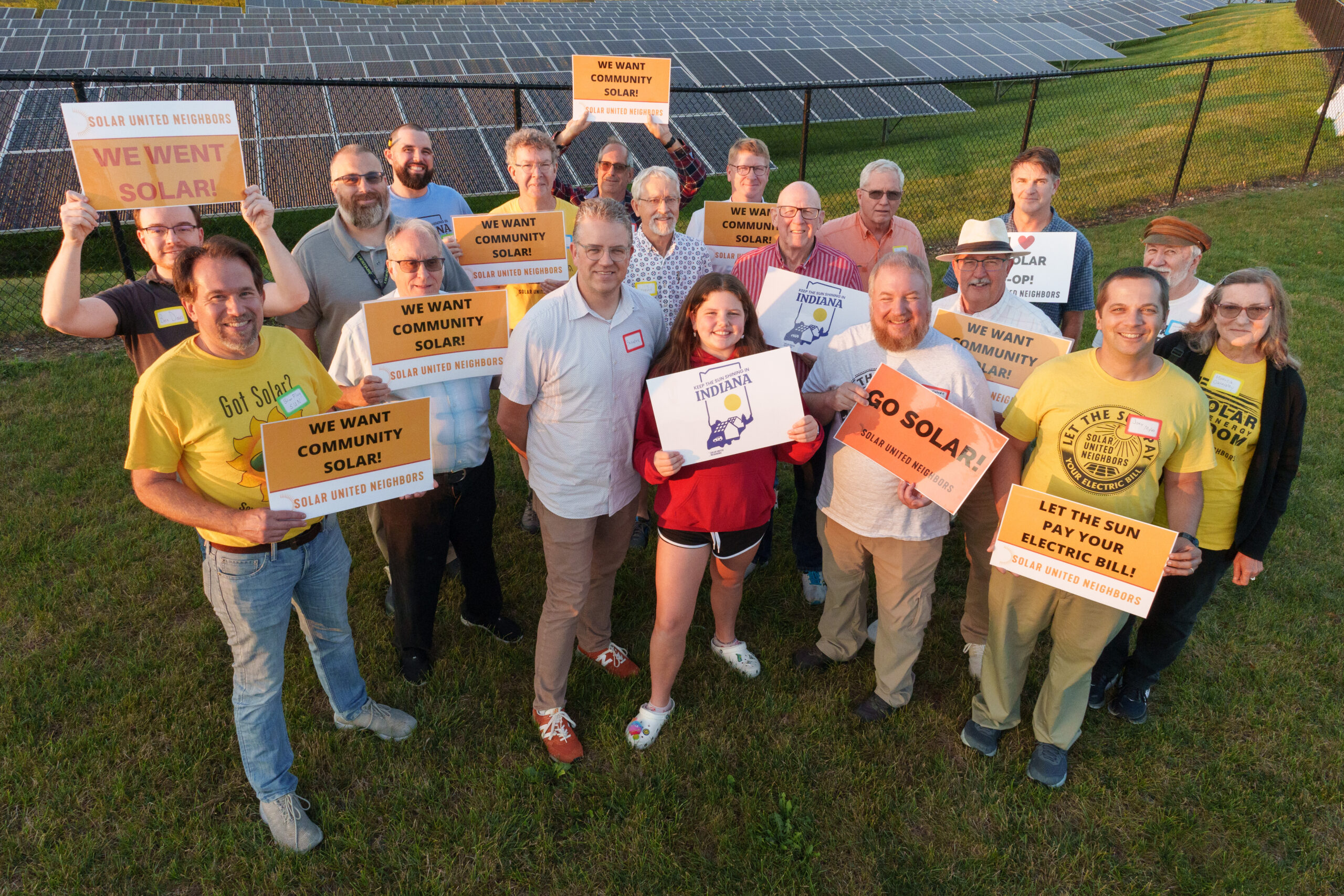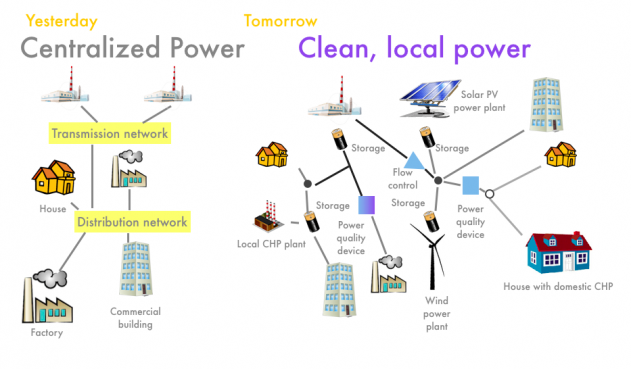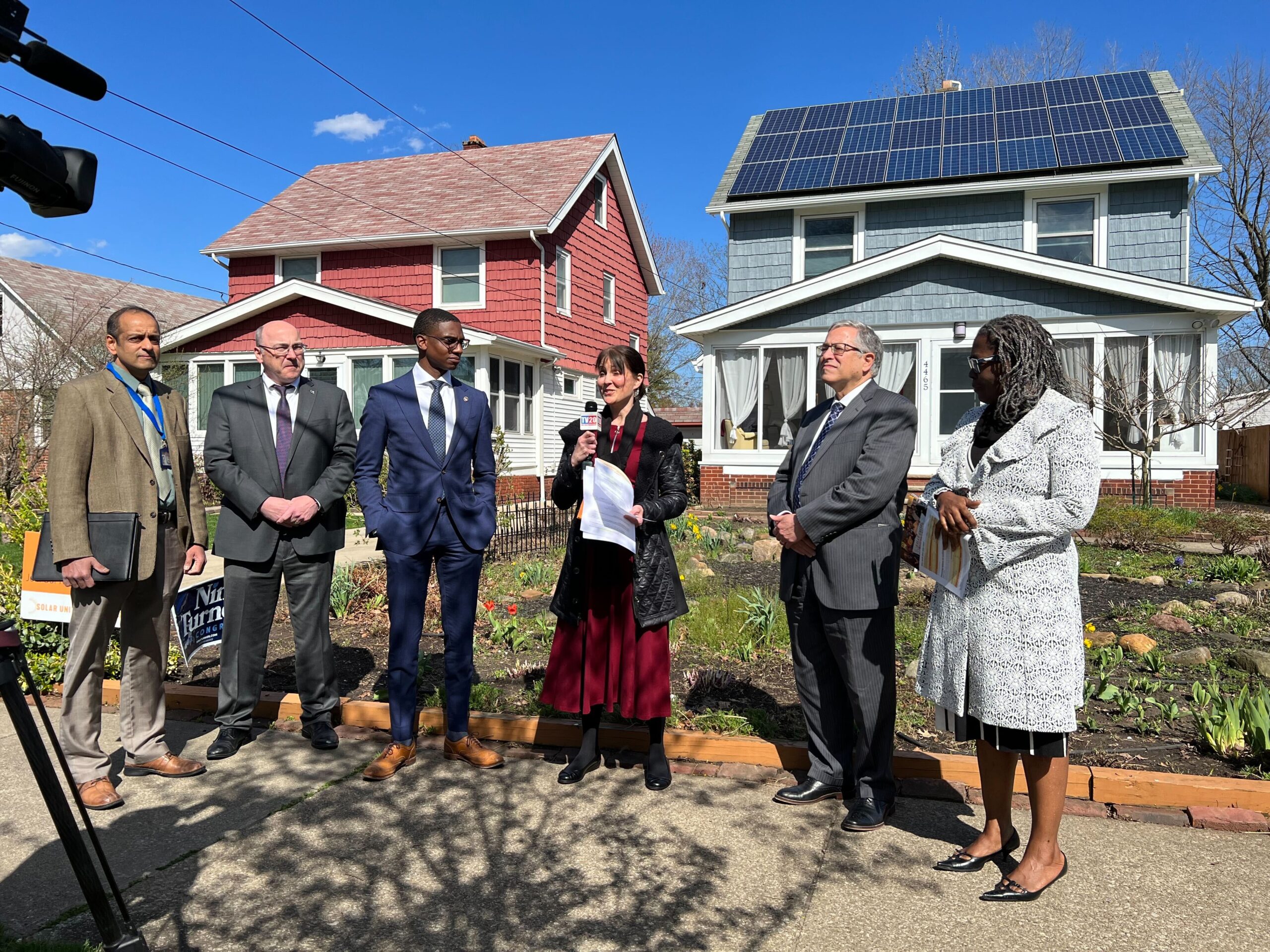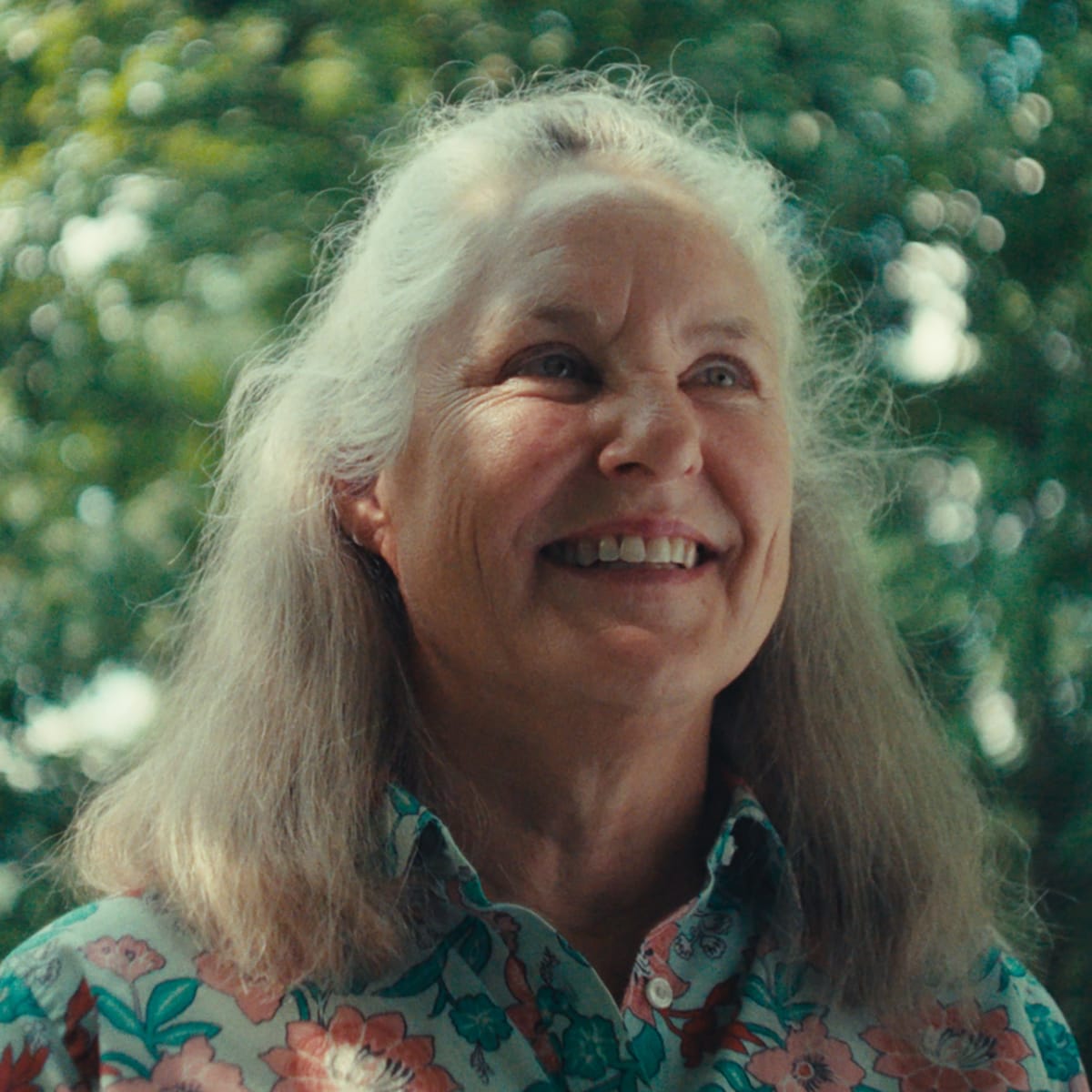The future of America’s electric grid

Let’s start with the challenge
America’s electric grid was designed in the 19th century. The country needed to send electricity from remote power plants to population centers. To accomplish this, officials decided to give utilities monopoly control over local markets.
The electric grid expanded across the country in the 20th century. At the time, centralization was essential to bringing down the cost of service. Even today, most of the electricity we use is generated remotely. It travels to cities via high-voltage transmission lines. From there, it’s distributed to customers’ homes and businesses.
Unfortunately, monopolies limit consumer choice and participation. So to protect customer interests, the government established state regulatory bodies like public utility commissions (PUCs). Over time, many PUCs have become “captured” by the industry they were charged to regulate. Monopoly utilities have become one of the most powerful lobbying and political influences in state houses across the nation.
While a centralized, monopolistic system worked well for a while, it no longer makes technical, political, or economic sense. We need change.

Source: Institute for Local Self Reliance
The good news: change is happening
Distributed solar energy. Wind energy. Smart meters. Battery storage. The growth of these stronger, more affordable distributed energy technologies is creating huge new opportunities to upgrade our energy system.
We’re beginning to see significant changes to the grid, energy markets, and the rules that govern them.
Efforts are underway in many states to reform the way electricity is generated, distributed, and used. Diverse stakeholders are coming to the table, including utilities, regulators, and renewable energy advocates. They are participating in regulatory proceedings organized by their state’s public utilities commission.
Many organizations — like SUN — are working to ensure that these proceedings include ample public participation. We are fighting for new energy systems founded on energy efficiency, conservation, climate resilience, and community-driven renewable energy.
In Maryland, we are participating in proceedings to ensure the electric grid is clean, equitable, and resilient. We regularly blog about how this grid would work. We were a founding member of Marylanders for Energy Democracy & Affordability, a coalition of energy affordability, clean energy, and energy democracy groups working to ensure that these principles are represented in the Maryland proceeding.
In other cases, pieces of the puzzle are being looked at, like utility resource planning and rate design reform in many different states.
Whether comprehensive or piecemeal, it’s all part of grid reform.

Grid reform means we the people have more control
At Solar United Neighbors, we believe that solar producers need to be front and center in the design and implementation of the grid of the future.
The 20th century electricity system brought power to the masses. The 21st century distributed energy system will allow people to make power efficient, abundant, affordable, and more reliable.
We envision a democratic electricity grid that is efficient, clean, transparent, and inclusive.
Join us to reform the grid!
Let’s fight for energy freedom and build an energy system that works for everyone.
Learn more about grid reform
Performance-based regulation: Seeking the new utility business model
Grid Neutrality: Principles for Tomorrow’s Electricity Sector
Beyond Utility 2.0 to Energy Democracy
A Pathway to the Distributed Grid
The Institute for Local Self-Reliance’s Energy Democracy program
The Local Energy Rules Podcast
Marylanders for Energy Democracy & Affordability
Co-op Power: A profile in cooperative ownership
Why Race Matters in Determining our Energy Future
Rhode Island charts a course for a cleaner grid
Get the latest on solar straight to your inbox.
Fight for your solar rights.
Everyone has the right to go solar. Spread the sunshine nationwide and in your local community by taking action, joining events, and more.
